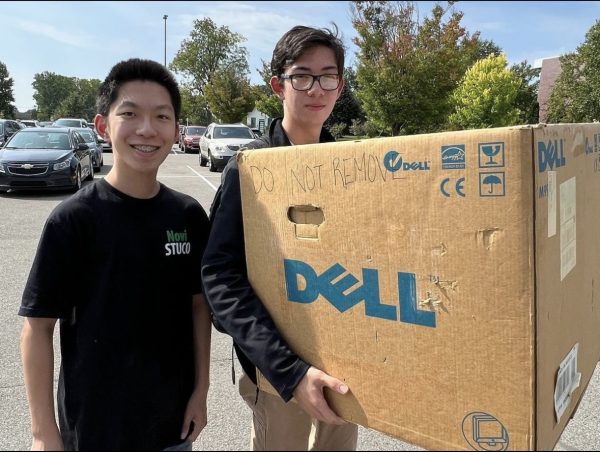Crashcourse to Depop
High school students aren’t known for having the largest budget for shopping. Most teenagers are either unemployed or working minimum-wage, and have to survive off birthday money and gift cards. Still, showcasing a unique style is a lot of fun, and “not being able to afford it” is never reason convincing enough to stop shopping.
There are many cheap places to buy clothing. For unique items, there’s thrifting. For a colorful array of basics, there’s Amazon. For trendy jeans and tees, there’s Target.
One place is becoming more popular recently, with it being made specifically for broke teenagers who love clothes. Introducing, Depop.
Depop is a buying and selling platform in the form of a website and a free app. Usually clothing is sold but there are also accessories, jewelry and handmade objects. The prices are low, and on many pieces, it’s possible to make offers to try and negotiate the price. It’s just as simple to be a seller as it is to buyer, so it’s easy to make money using this app, too.
As with most things, there are both positives and negatives when shopping with Depop.
Out of all the sellers on Depop, most are relatable teenagers. They know how important shipping is, so they send out the package in a few days. A lot of them also put handwritten thank you notes and stickers in the package along with the item. They know how to use technology well, which is crucial in having an online shop, and messaging them can feel as simple as messaging a friend.
For buyers, messaging is one of the most helpful aspects of Depop. The process of messaging resembles texting, which is less formal than an email and takes the pressure off of new buyers. Due to the sellers being real people, automated responses aren’t being received, but for the majority of the time the Depop sellers still answer quickly.
However, it is never 100% reliable when making a purchase online. To avoid a scam, make sure to do some research before buying something. Buyers can review a seller, so consult the reviews. Also, after having a good shopping experience with a seller, leave a review after receiving it to help future buyers.
Even if the seller has good reviews, always message the buyer before buying one of their items. Either ask them a question about measurements or simply let them know you’re interested. This is to make sure they’re still actively selling this item, and that they’re dependable enough to reply.
One thing that might be considered a negative is that majority of the clothing sold on Depop isn’t brand new. It’s mostly second-hand fashion, and the quality of the clothing varies. Some pieces might be brand new, being sold only because they didn’t fit after one try-on. Other pieces might have small stains or tiny holes.
Some people might view this as a positive, since pre-owned clothing might be more comfortable, or the worn look might fit their style more.
It is required to upload photos when selling something, so there will always be photos to refer to. The sellers normally add multiple photos, and depending on the seller, photos might be shown modeled on a person or zoomed in on certain features so buyers can get a closer look.
In the photos, captions are also required for the sellers to add. In these captions, sellers will usually provide buyers with information such as if an item is new or used, and if there are any mishaps with the item. They also might add warnings if the clothing item fits differently than the tag or original store stated. For many instances on Depop, clothing will be sold brand new because it was too small, too long, etc, when first purchased.
If a buyer isn’t confident about an item, they can check if returns and refunds are available. A seller’s “shop,” another word for their profile, has a bio that provides information about them. This is also where buyers can find their shipping policies, payment preferences, and location.
Sofia Pratt is a junior and this is her first semester in journalism. She has a long list of hobbies that change every month, but currently she is into...




